Today we were awed by the power of several thunderstorms following each other over the plains and hills of the normally arid Great Karoo, as well as by the flash floods and rainbows that followed in their wake.
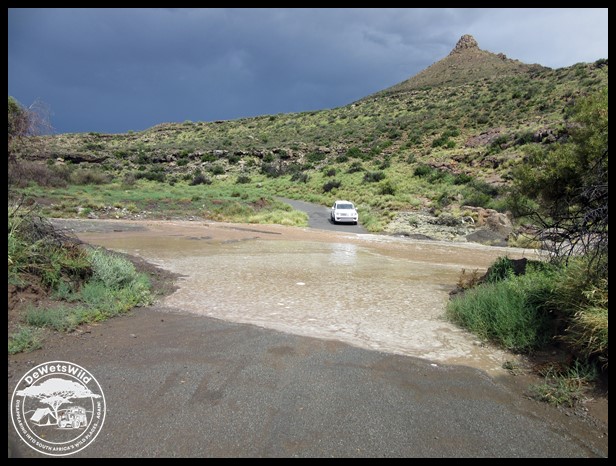


Today we were awed by the power of several thunderstorms following each other over the plains and hills of the normally arid Great Karoo, as well as by the flash floods and rainbows that followed in their wake.

The Great Karoo, which covers much of South Africa’s western and central interior, is an arid region, rich in drought resistant plant and animal life. Since being settled by European stock farmers in the early 1700’s, large game was systematically eradicated from the area; the last lions for instance disappearing from the region in the 1820’s. In what is today the Karoo National Park, visitors will notice the rock-traps built to catch predators like brown hyena and leopard, with an easily accessible example right inside the rest camp, between the camping area and chalets. The Park came about when, in the 1970’s, the National Parks Board (today SANParks) and interested NGO’s realised that there was very little of the Karoo being formally protected and started looking for a suitable area to be proclaimed a National Park. Eventually a site just outside the town of Beaufort-West was decided upon, and officially proclaimed the Karoo National Park, 17,706 hectares in extent, in September 1979.
The Karoo’s history goes back much further than that though. Around 255-million years ago, the area was lush and covered in swamps, and sediments laid down then are today a rich source of fossils. This fascinating world is made accessible to the park’s visitors along the short (400m), paved Fossil Trail near the reception complex.
Since its proclamation, additional land was acquired and incorporated, and today the Karoo National Park covers an extensive area of 88,133 hectares. The peaks of the Nuweveld Mountains rise to over 1,900m above sea level, though most of the plains lie at and average of 850m above sea level. This is a harsh environment, with an average annual rainfall of just over 200mm (most of which falls in summer), winter temperatures dropping as low as -15°C (with frost and snowfall a common occurence) and summer temperatures soaring to over 40°C. Most of the vegetation consists of hardy grasses and woody shrubs, with extensive stands of thorny trees along the dry river courses, and about 864 recorded plant species!
After it was proclaimed, several species of animals that occurred here naturally were reintroduced, the most notable of which are over 700 Cape Mountain Zebra, Buffalo, Black Rhino and Lion. Today, the Park protects 62 species of mammal, 63 reptile species (including 5 kinds of tortoise), 10 kinds of amphibians and even a single species of indigenous fish, the Chubbyhead Barb.
More than 200 bird species have been recorded inside the Karoo National Park, several of which are endemic to this arid landscape.
For birdwatchers especially, the birdhide situated on the edge of the camp overlooking a reed-fringed waterhole is a real boon.
Overnight visitors have a choice of camping and accommodation (with breakfast included) available in the award-winning rest camp, which was opened in 1989. The camp also has a restaurant and little shop, as well as a very popular swimming pool. Near the campsite an old barn has been converted into an information centre, with interesting displays on the history of the Karoo and the National Park that carries its name. Two picnic sites, at Bulkraal and Doornhoek, cater to the needs of day visitors. Afsaal and Embizweni are more rustic cottages located along the Park’s extensive network of 4×4 trails. Visitors with less rugged vehicles are able to drive in comfort along the delightfully named Potlekkertjie and Lammertjiesleegte Loops, and the spectacular Klipspringer Pass.
The Karoo National Park was the first destination of our recent December 2017 holidays. It is a drive of roughly 1,000 km from our home in Pretoria to the Park’s entrance gate, conveniently located along the N1 highway about 6km south of Beaufort-West. The nearest international airport is in Cape Town, about 500km to the southwest.


The beautiful Gemsbok is just one of several antelope species that find sanctuary here at the Karoo National Park, and is one of the most frequently observed large mammals out on the reserve’s extensive network of drives.

—–
If you enjoy de Wets Wild as much as we enjoy sharing our love for South Africa’s wild places and their denizens with you, please vote for us in the 2017 South African Blog Awards.
We’ve entered the categories for “Best Travel Blog” and “Best Environmental Blog”, and you are allowed to vote for us in both. Clicking on the badge below will bring you to the voting site. After voting, you’ll receive an e-mail requiring you to click on a link to confirm your votes.
Thank you very much for your support!

We spent our day in awe of the Karoo’s rugged beauty 
—–
If you enjoy de Wets Wild as much as we enjoy sharing our love for South Africa’s wild places and their denizens with you, please vote for us in the 2017 South African Blog Awards.
We’ve entered the categories for “Best Travel Blog” and “Best Environmental Blog”, and you are allowed to vote for us in both. Clicking on the badge below will bring you to the voting site. After voting, you’ll receive an e-mail requiring you to click on a link to confirm your votes.
Thank you very much for your support!
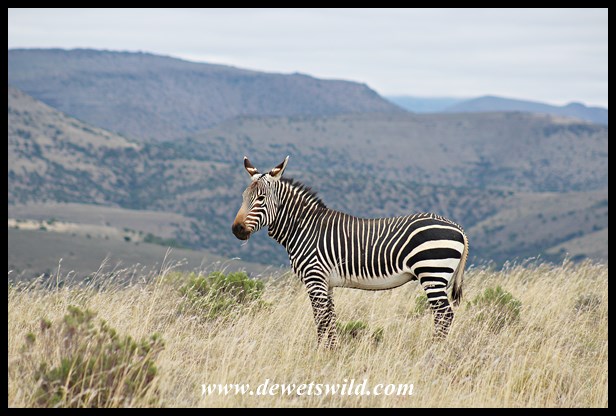
The Cape Mountain Zebra is a smaller, and much rarer, cousin of the better known plains zebra. It occurs naturally only in the southern provinces of South Africa and is considered vulnerable, though the population is increasing in size thanks to dedicated conservation work at especially the Mountain Zebra and Karoo National Parks, both of which offers an excellent chance of seeing these beautiful animals in their natural habitat.
Mountain Zebras occur in small family groups of up to 15 animals, led by a dominant stallion, while young stallions roam around in bachelor groups after being ejected from the groups they were born in. Adults of both sexes are extremely protective of their young.
Mountain Zebras inhabit, as their name suggests, dry, rocky, mountainous areas and the surrounding plains and valleys (the latter being important as hiding places against cold weather). They are almost exclusively grazing animals and can stay without water for up to three days, though they prefer to drink daily if surface water is available.
Mares give birth to a single foal at any time of the year. With an adult weight of around 250kg and shoulder height of 1.25m, the Cape Mountain Zebra is slightly smaller than the plains zebra.
Wide open spaces in an ancient thirst land

In South Africa’s Western Cape Province, near the historic town of Beaufort-West, lies the Karoo National Park: 88,113 hectares of semi-desert plains and towering mountains.

Inside the Park, altitudes vary between 840 meters above sea level in the valleys to over 1900 meters on top of the Nuweveld Mountains, the average annual rainfall is only 236mm and temperatures can range between -5°C on winter nights to 41°C on summer days.

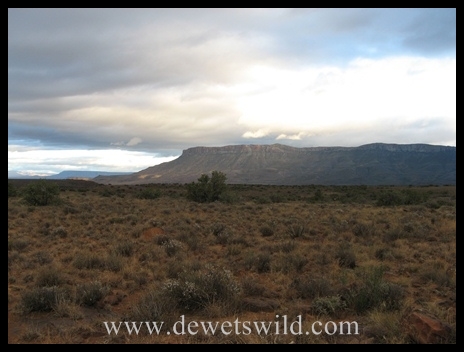
The wide range of habitats in the park, from scrub- and grasslands to dense riverine thickets, provide a safe haven to 202 bird species, 59 kinds of mammals (including lion, buffalo and black rhinoceros), 66 types of reptiles and, surprisingly for such an arid region, 8 species of frog.





Accommodation and camping is available at the award-winning rest camp, opened in 1989, complete with a well-stocked little shop, restaurant and meeting venue. Visitors can enjoy bird-watching from a hide near the camp, guided walks, two beautiful picnic areas, an interesting information centre in an old barn, a swimming pool, and 4×4 trails. Guided and self-drive game viewing is possible along a well-maintained network of scenic roads, the routes having been given delightful names such as Klipspringer Pass, Potlekkertjie Loop and Lammertjies Leegte.
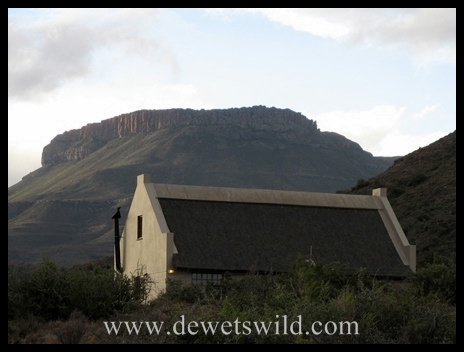

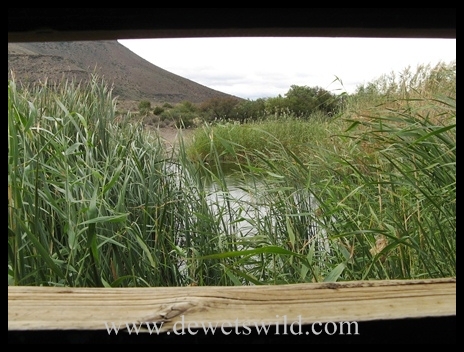

The Karoo is rich in fossils dating back as far as 255 million years ago, and visitors can explore this fascinating aspect of the park along the fossil trail (a 300m paved walkway) in the camp.

The Karoo National Park is easily accessible, lying as it is along South Africa’s main North-South highway (N1) and is often used as a stop-over by weary travellers. It is however a fascinating and rewarding destination in its own right, worthy of more than just a passing glance.